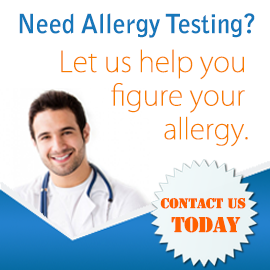Understanding Anaphylaxis: Recognizing Symptoms and Preparing for Emergencies

Anaphylaxis is a severe and potentially life-threatening allergic reaction that requires immediate medical attention. It can occur in response to various allergens, such as certain foods, insect stings, medications, or latex. Understanding the symptoms of anaphylaxis and being prepared for emergencies is crucial for individuals with known allergies and their families. In this blog post, we’ll explore the signs of anaphylaxis, what to do during an emergency, and how to prepare for potential allergic reactions effectively.
Recognizing the Symptoms of Anaphylaxis
Anaphylaxis can develop rapidly, often within minutes of exposure to an allergen. Recognizing the symptoms early can save lives. Common signs of anaphylaxis include:
- Skin Reactions: Hives, redness, or swelling, particularly around the face, lips, or eyes.
- Respiratory Symptoms: Difficulty breathing, wheezing, or tightness in the throat or chest.
- Gastrointestinal Issues: Nausea, vomiting, diarrhea, or abdominal pain.
- Cardiovascular Symptoms: Rapid or weak pulse, low blood pressure, or fainting.
- Neurological Symptoms: Dizziness, confusion, or loss of consciousness.
If any of these symptoms occur after exposure to an allergen, it is crucial to act quickly.
Preparing for Emergencies
- Create an Allergy Action Plan: Develop a personalized allergy action plan with your healthcare provider. This plan should outline known allergens, symptoms of anaphylaxis, and the steps to take in case of an allergic reaction.
- Carry an Epinephrine Auto-Injector: Individuals at risk for anaphylaxis should always carry an Epinephrine auto-injector (e.g., EpiPen) and ensure it is easily accessible. Teach family members, friends, and caregivers how to use it in an emergency.
- Educate Others: Make sure that people around you, including teachers, coaches, and friends, are aware of your allergies and know how to respond in case of an anaphylactic reaction. Share your action plan with them and ensure they understand the importance of prompt treatment.
- Know the Signs: Be vigilant about recognizing the early signs of anaphylaxis in yourself or your child. Prompt action can be critical for successful treatment.
- Emergency Contacts: Keep a list of easily accessible emergency contacts, including your allergist, primary care physician, and local emergency services. Ensure that your family members have this information readily available.
- Regular Check-Ups: Schedule regular appointments with your allergist to review your allergies, update your action plan, and discuss any changes in your condition or treatment.
Take Anaphylaxis Seriously and Be Prepared
Anaphylaxis is a serious medical condition that requires immediate attention and preparedness. Recognizing the symptoms, creating an effective action plan, and educating those around you can significantly reduce the risks of severe allergic reactions. If you or a loved one is at risk for anaphylaxis, don’t hesitate to contact us at Allergy, Asthma, and Immunology Medical Group at 805-658-9500. Our expert team is here to help you navigate your allergies safely and effectively.




